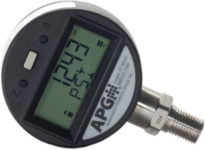Difference between digital/bourdon pressure gauge

Pressure gauges, defined in the simplest way possible, are instruments used to measure and display pressure. Although all pressure gauges record the same thing, several types of gauges are still used in various fields. For better or worse, there are several factors that determine whether or not a specific gauge should be used in the field. Take, for example, one of the oldest, and still the most popular, Bourdon pressure gauge. The first models of these have existed over a hundred years, whereas now digital pressure gauges are beginning to come into competition with this classic style. Both have their positives and negatives, and we intend to expose them for their similarities and differences to better understand which type of pressure gauge is right for you.






